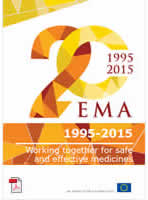History of EMA
Founded in 1995, the European Medicines Agency (EMA) is working across the European Union (EU) and globally to protect public and animal health. It is doing so by assessing medicines to rigorous scientific standards. EMA is also providing partners and stakeholders with independent, science-based information on medicines.
Corporate


